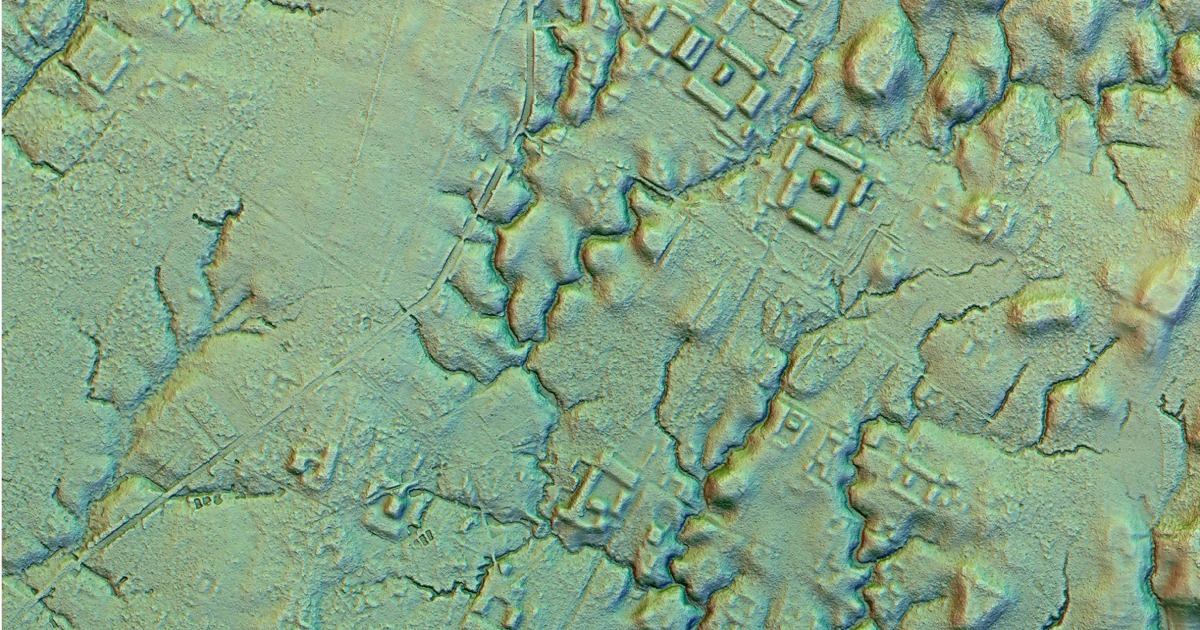By Larissa Gao - NBC News
A group of "lost cities" that flourished for millennia have been discovered by archaeologists in the Amazon. Those findings were published in the journal Science on Thursday.
Laser images reveal intricate networks of roads, neighborhoods, and gardens as complex as those built by the Mayan civilization.
Archaeologist Stéphen Rostain of France's National Center for Scientific Research (CNRS) first observed traces of the cities more than 20 years ago, but "didn't have a complete view of the region," he told Science.
This 3D laser image shows rectangular platforms arranged around low squares and distributed along streets extensively excavated at the Kunguints site in Ecuador's Upano Valley.Antoine Dorison, Stéphen Rostai/AP
The new laser mapping technology, called lidar, helped researchers see through forest cover and uncover new details of the mounds and structures of settlements in Ecuador's Upano Valley.
The images revealed more than 6,000 earthen platforms laid out in a geometric pattern, connected by roads and intertwined with the agricultural landscapes and river drainages of an urban agrarian civilization in the eastern foothills of the Andes.
[Exoskeletons and a Robot Waiter: The Futuristic Inventions That Promise to Revolutionize How We Live]
"It was a lost valley of cities," Rostain, who leads investigations at the CNRS, told The Associated Press. "It's unbelievable."
The sites were built and occupied by the Upano people from approximately 500 B.C. to between 300 A.D. and 600 A.D. The size of the population has yet to be determined.
The team found five large settlements and 10 smaller ones with residential and ceremonial structures along 116 square miles in the valley, a vastness that puts them on a par with other major archaeological sites. The central area of Kilamope, one of the settlements, for example, is as large as the Giza Plateau in Egypt or the main avenue of Teotihuacan in Mexico.
The landscape of Upano societies could rival that of the "garden cities" of the Maya, in which houses were surrounded by farmland and the food consumed by most residents was harvested in the city, the authors explained to Science.
[Artificial intelligence takes over at the Las Vegas Tech Fair]
The discovery of the Upano sites is so far "just the tip of the iceberg" of what could be found in the Ecuadorian Amazon, said Fernando Mejia, one of the authors of the research and an archaeologist at the Pontifical Catholic University of Ecuador.
The images show a main street running through an urban area. Antoine Dorison, Stéphen Rostai/AP
The Amazon is considered the most dangerous rainforest in the world, with dense, towering trees, tangled vines, hostile wildlife, and poisonous insects. Archaeologists believed it was mostly suitable for hunter-gatherers, but an inhospitable place for complex civilizations.
However, in the past two decades, scientists have found traces of human settlements in it, from Bolivia to Brazil, including mounds, hillforts and pyramids.
[Do you know how much time you spend each year on your phone? We help you do the math]
The newly mapped cities in the Upano Valley are 1,000 years older than previous finds, including the Llanos de Mojos, an Amazonian society in Bolivia whose discovery overturned what scientists previously believed about the civilizations of the Amazon rainforest.
The details of the cultures of both places are only beginning to be revealed.
Carla Jaimes Betancourt, a German researcher who is an expert on Llanos de Mojos, told Science that the inhabitants of both the Upano Valley and Llanos de Mojos were farmers. They built roads, canals, and large civic and ceremonial buildings. However, "we are only beginning to understand how these cities functioned," he said, including the population of the cities, with whom they traded, and how societies were governed.
Rostain underlined how much remains to be discovered. "We say 'Amazonia,' but we should say 'Amazonia,' to capture the ancient cultural diversity of the region," he said.
"There has always been an incredible diversity of peoples and settlements in the Amazon, not just one," he added. "We're learning more about them."

